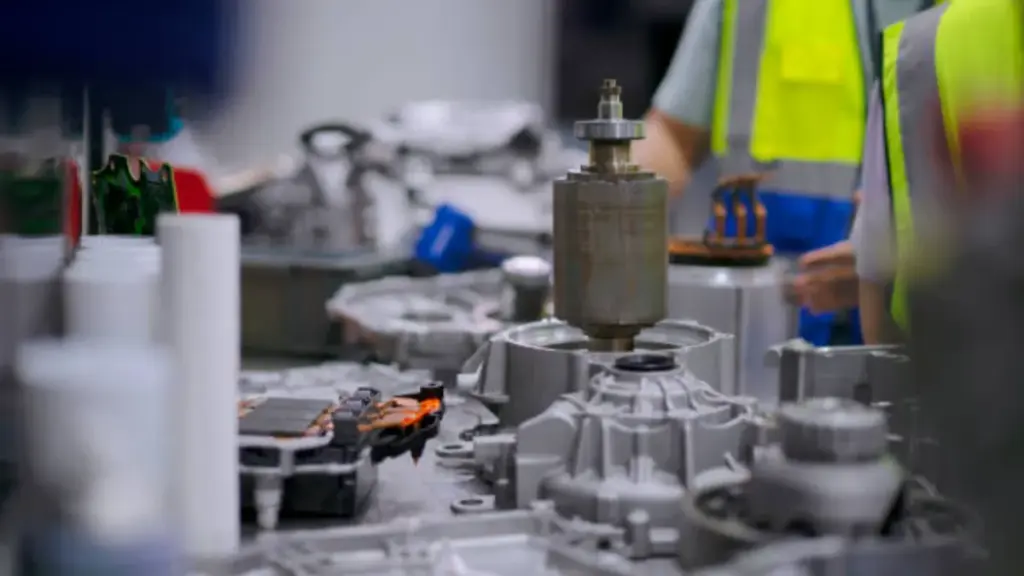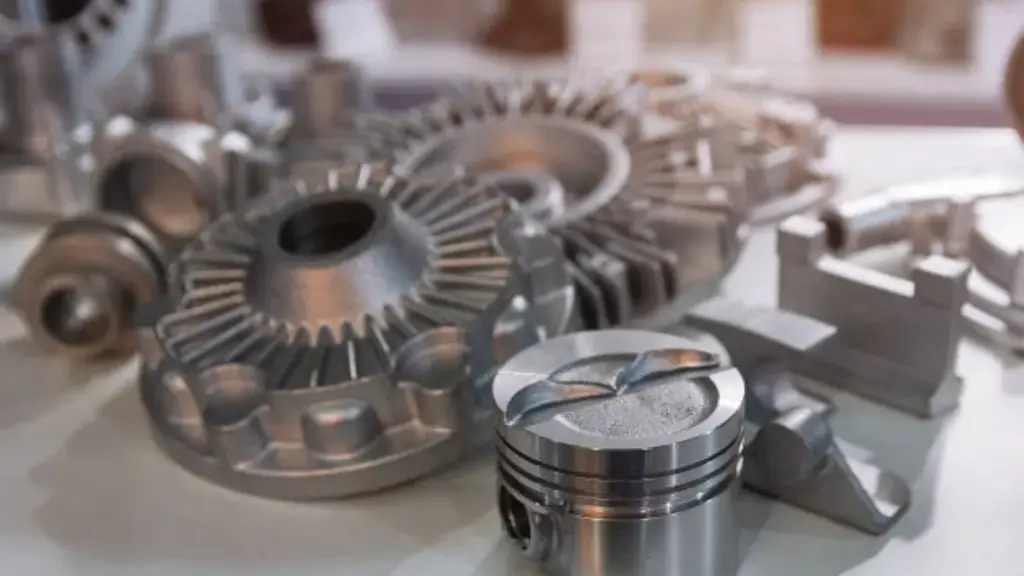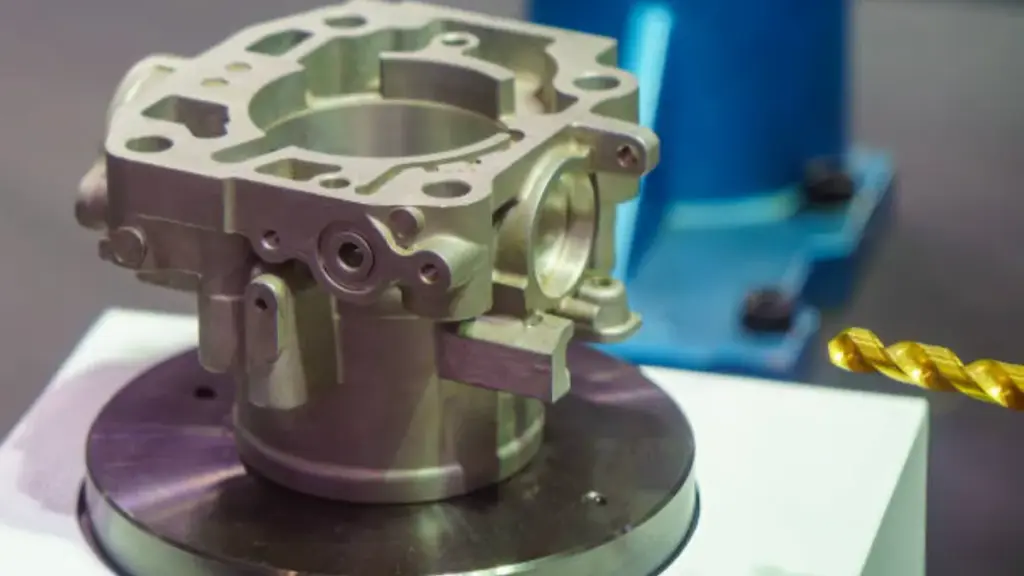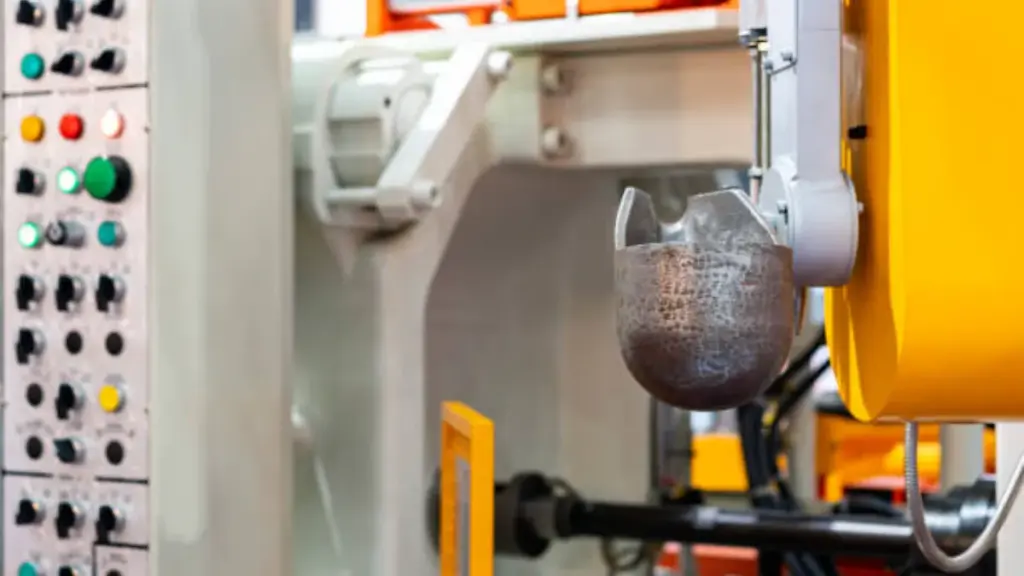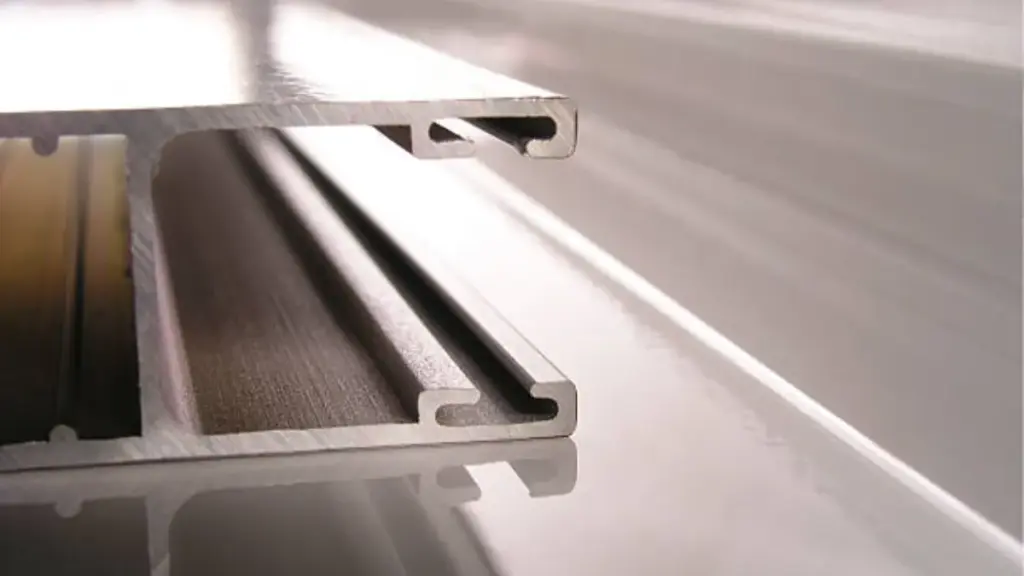जब सामग्री की तुलना करने की बात आती है, कास्ट आयरन और कास्ट एल्यूमीनियम उनकी अनूठी विशेषताओं और विविध अनुप्रयोगों के कारण बाहर खड़े हैं. जबकि दोनों सामग्रियों में उनकी संबंधित ताकत और कमजोरियां हैं, विभिन्न संदर्भों में सूचित निर्णय लेने के लिए उनके मतभेदों को समझना महत्वपूर्ण है. इस आलेख में, हम कच्चा लोहा और कास्ट एल्यूमीनियम के बीच के भेदों में तल्लीन करेंगे, वजन जैसे कारकों की जांच करना, गर्मी प्रतिधारण, और संक्षारण प्रतिरोध, वगैरह.
| कारकों | कच्चा लोहा | एल्यूमीनियम कास्ट |
| वज़न | वज़नदार | लाइटवेट |
| गर्मी प्रतिधारण | उत्कृष्ट गर्मी प्रतिधारण | कम प्रभावी ऊष्मा प्रतिधारण |
| गर्मी चालकता | कम गर्मी चालकता | उच्च गर्मी चालकता |
| संक्षारण प्रतिरोध | जंग और जंग के लिए प्रवण | अत्यधिक संक्षारण-प्रतिरोधी |
| सहनशीलता | अत्यधिक टिकाऊ | अपेक्षाकृत टिकाऊ |
| लागत | अक्सर अधिक महंगा | आम तौर पर अधिक सस्ती |
कास्ट एल्यूमीनियम क्या है?
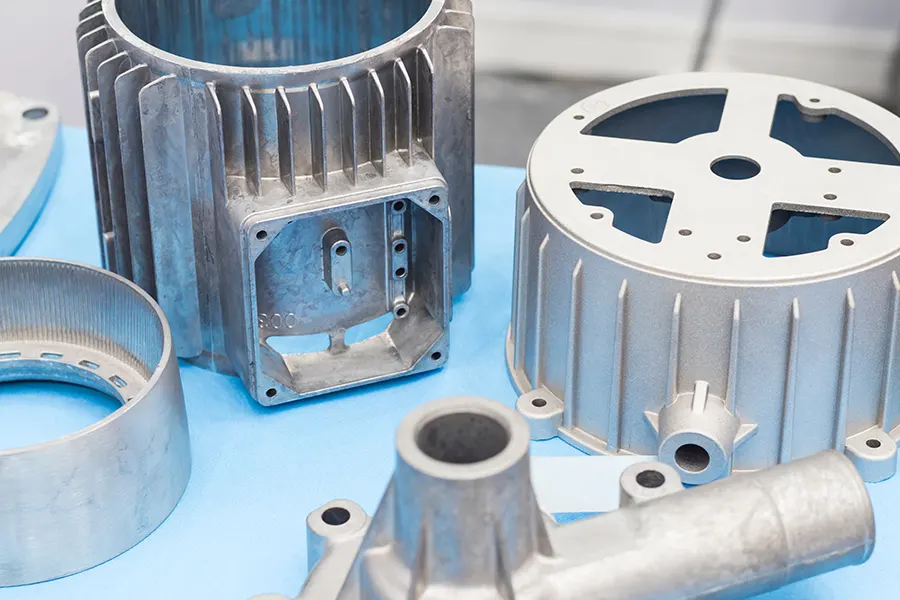
एल्यूमीनियम कास्ट एक हल्के सामग्री है जो पिघला हुआ एल्यूमीनियम मिश्र धातु को नए साँचे में डालकर बनाई गई है, सटीक आकार देने के लिए अनुमति. इसकी उल्लेखनीय विशेषता इसकी शानदार गर्मी चालकता में निहित है, विभिन्न प्रक्रियाओं के दौरान भी गर्मी वितरण सुनिश्चित करना. यह त्वरित और कुशल खाना पकाने के तरीकों के लिए कास्ट एल्यूमीनियम को अच्छी तरह से अनुकूल बनाता है, जहां सटीक तापमान नियंत्रण महत्वपूर्ण है.
कच्चा लोहा क्या है?

इसके विपरीत, कच्चा लोहा एक मजबूत और भारी सामग्री है जो पिघले हुए लोहे को सांचों में डालकर निर्मित है. इसकी असाधारण गर्मी प्रतिधारण क्षमताओं ने इसे अलग कर दिया, इसे धीमी और लंबे समय तक खाना पकाने के लिए आदर्श बनाना. कच्चा लोहा का वजन समान रूप से गर्मी वितरित करने की अपनी क्षमता में योगदान देता है, पूरे समय लगातार तापमान बनाए रखना कुकवेयर. यह एक शानदार sear प्राप्त करने और धीमी गति से कुकिंग प्रक्रियाओं को प्रभावी ढंग से प्राप्त करने के लिए एकदम सही बनाता है.
कच्चा लोहा बनाम. एल्यूमीनियम कास्ट
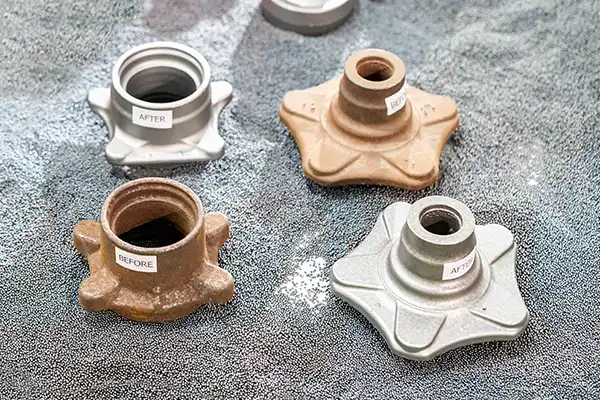
जब कच्चा लोहा और कास्ट एल्यूमीनियम की तुलना करने की बात आती है, कई कारक खेल में आते हैं. एक सूचित निर्णय लेने के लिए, वजन में उनके भेदों की जांच करना आवश्यक है, गर्मी प्रतिधारण, गर्मी चालकता, संक्षारण प्रतिरोध, टिकाऊपन, और लागत. चलो इन पहलुओं में गहराई से:
ए. वज़न
कच्चा लोहा और कास्ट एल्यूमीनियम के बीच प्राथमिक विभेदक कारकों में से एक वजन है. कच्चा लोहा की तुलना में कास्ट एल्यूमीनियम काफी हल्का होता है. यह हल्का प्रकृति कास्ट एल्यूमीनियम को अधिक प्रबंधनीय और संभालने में आसान बनाती है, खासकर जब यह कुकवेयर के बड़े टुकड़ों की बात आती है. वहीं दूसरी ओर, कच्चा लोहा काफी भारी है, जो खाना पकाने के दौरान स्थिरता प्रदान कर सकता है, लेकिन उन लोगों के लिए चुनौतियां भी पैदा कर सकता है जो हल्के विकल्प पसंद करते हैं या भौतिक सीमाएँ हैं.
बी. गर्मी प्रतिधारण
कच्चा लोहा और कास्ट एल्यूमीनियम के बीच चयन करते समय हीट रिटेंशन एक महत्वपूर्ण विचार है. इस पहलू में लोहे के एक्सेल, क्योंकि इसमें प्रभावशाली गर्मी प्रतिधारण क्षमताएं हैं. यह समान रूप से गर्मी को अवशोषित और वितरित कर सकता है, कुकवेयर में लगातार तापमान सुनिश्चित करना. यह धीमी-पकाने वाले तरीकों और व्यंजनों के लिए कच्चा लोहा आदर्श बनाता है जिनके लिए लंबे समय तक उबाल की आवश्यकता होती है. इसके विपरीत, जबकि कास्ट एल्यूमीनियम अच्छी तरह से गर्मी का संचालन करता है, यह कच्चा लोहा के रूप में प्रभावी रूप से गर्मी को बनाए नहीं रखता है. यह संपत्ति त्वरित-पकाने वाले तरीकों के लिए उपयुक्त हो सकती है, लेकिन उन व्यंजनों के लिए कम उपयुक्त हो सकती है जो एक विस्तारित अवधि में निरंतर गर्मी की मांग करते हैं.
सी. गर्मी चालकता
गर्मी प्रतिधारण के साथ, गर्मी चालकता पर विचार करने के लिए एक और महत्वपूर्ण कारक है. गर्मी चालकता के मामले में कास्ट एल्यूमीनियम आउटशाइन कास्ट आयरन. यह सतह के पार जल्दी और समान रूप से गर्मी का संचालन करता है, कुशल और सटीक खाना पकाने के लिए. यह संपत्ति विशेष रूप से लाभप्रद है जब यह एक समान ब्राउनिंग प्राप्त करने और असमान रूप से पके हुए भोजन के जोखिम को कम करने की बात आती है. कच्चा लोहा, हालांकि एक बार गर्म होने के बाद गर्मी को समान रूप से वितरित करने में सक्षम, इसकी कम चालकता के कारण तापमान तक पहुंचने के लिए अधिक समय की आवश्यकता हो सकती है.
डी. संक्षारण प्रतिरोध
जब यह जंग प्रतिरोध की बात आती है, कास्ट एल्यूमीनियम में ऊपरी हाथ होता है. एल्यूमीनियम स्वाभाविक रूप से ऑक्साइड की एक सुरक्षात्मक परत बनाता है, जो जंग के खिलाफ एक बाधा के रूप में कार्य करता है. यह विशेषता कास्ट एल्यूमीनियम को जंग और गिरावट के अन्य रूपों के लिए अत्यधिक प्रतिरोधी बनाती है, इसकी लंबी उम्र सुनिश्चित करना. की तुलना में, कच्चा लोहा जंग और जंग के लिए अधिक प्रवण है, खासकर अगर ठीक से अनुभवी और बनाए नहीं रखा गया. जंग के गठन को रोकने और कच्चा आयरन कुकवेयर के जीवनकाल का विस्तार करने के लिए नियमित रूप से मसाला और उचित देखभाल आवश्यक है.
ईटी. सहनशीलता
स्थायित्व के संदर्भ में, कच्चा लोहा और कास्ट एल्यूमीनियम दोनों के अलग -अलग फायदे हैं. कच्चा लोहा अपने असाधारण स्थायित्व के लिए प्रसिद्ध है, कई कच्चे लोहे के कुकवेयर के टुकड़े उचित देखभाल के साथ पीढ़ियों तक चलते हैं. इसका ठोस निर्माण और प्रभाव के प्रति प्रतिरोध इसे अत्यधिक टिकाऊ बनाता है. एल्यूमीनियम कास्ट, जबकि कच्चा लोहा जितना टिकाऊ नहीं है, अभी भी अच्छा स्थायित्व प्रदान करता है, खासकर जब हल्के अनुप्रयोगों की बात आती है. तथापि, कास्ट एल्युमीनियम कुकवेयर को सावधानी से संभालना महत्वपूर्ण है ताकि डेंट और खरोंच से बचा जा सके जो इसकी लंबी उम्र को प्रभावित कर सकता है.
एफ. लागत
खरीदारी का निर्णय लेते समय लागत अक्सर एक महत्वपूर्ण विचार होती है. कच्चा एल्यूमीनियम आम तौर पर कच्चा लोहा की तुलना में अधिक किफायती होता है. कास्ट एल्यूमीनियम की उत्पादन प्रक्रिया कम श्रम-गहन है, जिसके परिणामस्वरूप कीमत कम हो गई. इसके विपरीत, उत्पादन की उच्च लागत के कारण कच्चा लोहा कुकवेयर अक्सर अधिक महंगा होता है. तथापि, यह ध्यान देने योग्य है कि कच्चा लोहा की दीर्घायु और स्थायित्व प्रारंभिक निवेश को ऑफसेट कर सकता है, इसे लंबे समय में एक लागत प्रभावी विकल्प बनाना.
कास्ट एल्यूमीनियम के पेशेवरों और विपक्ष
कास्ट एल्यूमीनियम कई फायदे प्रदान करता है, इसे विभिन्न उद्योगों के बीच लोकप्रिय बना रहा है.
पेशेवरों
- त्वरित और समान खाना पकाने के लिए उच्च गर्मी चालकता.
- आसान खाना पकाने और सफाई के लिए नॉन स्टिक सतह.
- परिवहन के लिए हल्के और व्यावहारिक.
- संक्षारण-प्रतिरोधी और टिकाऊ.
दोष
- खरोंच और डेंट के लिए अतिसंवेदनशील, सावधानीपूर्वक हैंडलिंग और रखरखाव की आवश्यकता है.
- सीमित गर्मी प्रतिधारण, लंबे समय तक चलने वाले व्यंजनों के लिए कम उपयुक्त.
कच्चा लोहा के पेशेवरों और विपक्ष
निम्नलिखित कच्चा लोहा के पेशेवरों और विपक्ष हैं.
पेशेवरों
- इष्टतम धीमी-कुकिंग प्रक्रियाओं के लिए अद्वितीय गर्मी प्रतिधारण.
- समय के साथ नॉन-स्टिक सतह का प्राकृतिक विकास बहुमुखी प्रतिभा और उपयोग में आसानी को बढ़ाता है.
- स्थायित्व और खरोंच के लिए प्रतिरोध, इसे धातु के बर्तन के साथ संगत बनाना.
दोष
- हैवीवेट संभालने और गतिशीलता में आसानी में बाधा डाल सकता है.
- अपने वजन के कारण तरल पदार्थों की सफाई और डालने के लिए अतिरिक्त देखभाल की आवश्यकता है.
- जंग को रोकने के लिए नियमित मसाला और रखरखाव आवश्यक है.
कास्ट एल्यूमीनियम बनाम. कच्चा लोहा, कौन सा बहतर है?
कास्ट एल्यूमीनियम और कच्चा लोहा के बीच चयन अंततः व्यक्तिगत वरीयता और विशिष्ट आवश्यकताओं के लिए उबलता है.
विचार करते समय कास्ट एल्यूमीनियम एक उत्कृष्ट विकल्प है हल्के सुविधा और कुशल गर्मी चालकता. यह उन अनुप्रयोगों में उत्कृष्टता प्राप्त करता है जो त्वरित खाना पकाने और सटीक तापमान नियंत्रण को प्राथमिकता देते हैं.
वहीं दूसरी ओर, कच्चा लोहा चमकता है गर्मी प्रतिधारण और स्थायित्व. इसकी हैवीवेट प्रकृति उत्कृष्ट गर्मी वितरण सुनिश्चित करती है और इसे लंबी खाना पकाने की प्रक्रियाओं के लिए आदर्श बनाती है और असाधारण रूप से परिणाम प्राप्त करती है. तथापि, कच्चा लोहा का वजन और रखरखाव की मांग सभी की जरूरतों के अनुरूप नहीं हो सकती है.
निष्कर्ष
दोनों कच्चा लोहा और कास्ट एल्यूमीनियम में अलग -अलग विशेषताओं के अनुरूप हैं. कास्ट एल्यूमीनियम की हल्की प्रकृति और कुशल गर्मी चालकता इसे त्वरित और सटीक खाना पकाने के लिए एक उत्कृष्ट विकल्प बनाती है. इस दौरान, कास्ट आयरन की उल्लेखनीय गर्मी प्रतिधारण क्षमताएं और स्थायित्व खुद को धीमी-पकाने वाले तरीकों के लिए उधार देते हैं और असाधारण रूप से सियरिंग परिणाम प्राप्त करते हैं. कच्चा लोहा और कास्ट एल्यूमीनियम के बीच अंतर को समझकर, विभिन्न अनुप्रयोगों के लिए सामग्री का चयन करते समय आप सूचित निर्णय ले सकते हैं.
पूछे जाने वाले प्रश्न
- एल्यूमीनियम जंग डालता है?
नहीं, कास्ट एल्यूमीनियम जंग नहीं करता है. यह स्वाभाविक रूप से ऑक्साइड की एक सुरक्षात्मक परत बनाता है, जो जंग और जंग के खिलाफ एक बाधा के रूप में कार्य करता है.
- कच्चा लोहा भंगुर है?
नहीं, कास्ट आयरन को भंगुर नहीं माना जाता है. यह एक मजबूत और टिकाऊ सामग्री है जिसे इसके प्रभाव प्रतिरोध के लिए जाना जाता है. तथापि, अचानक और चरम तापमान में बदलाव के अधीन होने पर क्रैकिंग के लिए यह अतिसंवेदनशील हो सकता है.
3. स्टील से कच्चा लोहा कैसे बताएं?
कच्चा लोहा और स्टील के बीच अंतर करने का एक तरीका एक साधारण चुंबक परीक्षण के माध्यम से है. कच्चा लोहा अत्यधिक चुंबकीय है, जबकि स्टील केवल मामूली चुंबकीय गुणों या कोई भी नहीं प्रदर्शित कर सकता है. इसके अतिरिक्त, कास्ट आयरन में आमतौर पर स्टील की चिकनी सतह की तुलना में एक मोटा और अधिक बनावट वाली सतह होती है.
- कैसे बताएं कि क्या कुछ कच्चा लोहा है?
यह निर्धारित करने के लिए कि क्या कुछ कच्चा लोहा है, आप कुछ प्रमुख विशेषताओं की तलाश कर सकते हैं. कच्चा लोहा आमतौर पर भारी होता है, अक्सर इसकी सतह पर एक खुरदरी बनावट या दृश्य कास्टिंग निशान प्रदर्शित करते हैं. यह चुंबकीय नहीं है, मतलब एक चुंबक दृढ़ता से उससे चिपके नहीं होगा. इसके अतिरिक्त, एक अंधेरे की उपस्थिति, अनुभवी कोटिंग या समय के साथ एक नॉन-स्टिक सतह विकसित करने की क्षमता कच्चा लोहा का संकेत हो सकती है.
- कास्ट एल्यूमीनियम कितना मजबूत है?
कास्ट एल्यूमीनियम को आमतौर पर एक मजबूत और टिकाऊ सामग्री माना जाता है. इसका ताकत-से-वजन अनुपात प्रभावशाली है, इसे विभिन्न अनुप्रयोगों के लिए उपयुक्त बनाना. हालांकि यह स्टील या कच्चा लोहा जैसी कुछ अन्य धातुओं की तरह मजबूत नहीं हो सकता है, यह रोजमर्रा के उपयोग के लिए पर्याप्त ताकत प्रदान करता है, विशेष रूप से उन संदर्भों में जहां इसकी हल्की प्रकृति लाभप्रद है.

